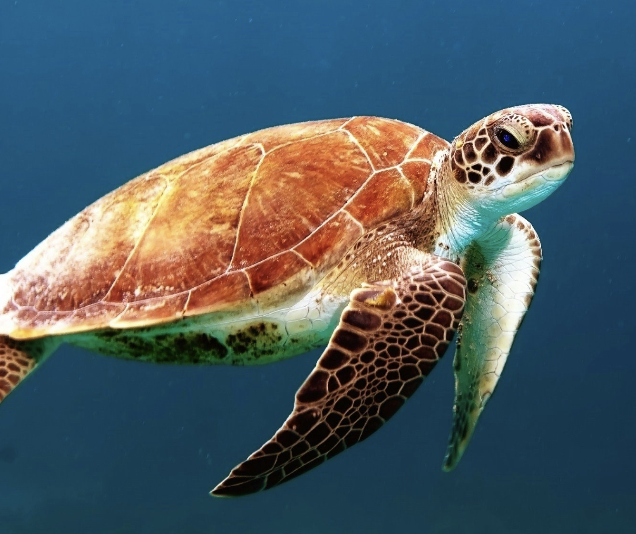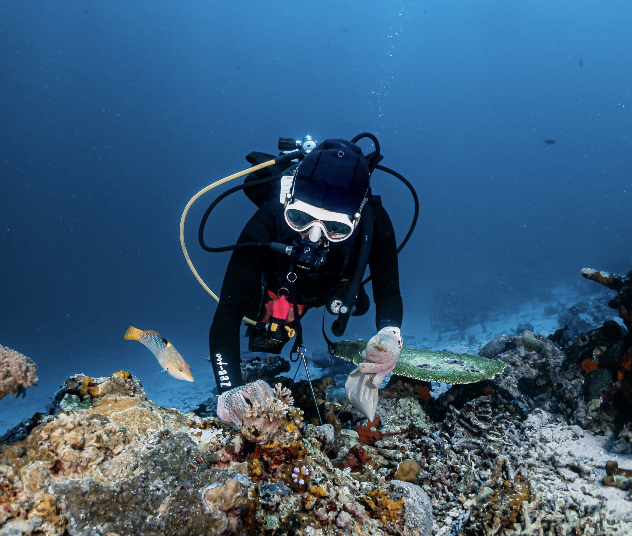2025 Grant Winners
Join us as we delve into their inspiring stories and discover the innovative initiatives that are helping to ensure a sustainable future for adventure travel and the planet alike. Explore the profound impact of these grant winners and be inspired by their tireless commitment to environmental stewardship.
POLAR BEAR SAFE COMMUNITIES
Location: Manitoba, Canada
Org: Polar Bears International
-
This project supports polar bear conservation and community safety in Churchill, Manitoba by promoting bear safety education for visitors and implementing urgent waste management solutions. Through broad distribution of safety videos and the installation of an electric fence around the town’s open landfill, the project aims to reduce human-bear conflict and protect both wildlife and people in this high-profile Arctic tourism destination.
-
The final success of this project would result in all tourists who arrive in Churchill being well versed in polar bear safety messaging, enjoying a beautiful experience viewing polar bears along the coastal areas, rather than in town, and returning home inspired to take action to address climate change.
-
This project tackles the urgent issue of human–polar bear conflict in one of the world’s most iconic wildlife tourism destinations by combining practical waste management solutions with targeted visitor education. With clear, tangible outcomes—like fencing the open landfill and promoting safety messaging—it offers a replicable model for coexistence in high-impact tourism areas facing climate-driven wildlife challenges.
INTEGRATING WOMEN INTO THE COBRAS UNIT
Location: Tsholotsho District, Zimbabwe
Org: The Water4Wildlife Trust
-
The Community Rhino Conservation Initiative (CRCI) is a collaborative effort to reintroduce white rhinos to communal lands bordering Zimbabwe’s Hwange National Park, creating a buffer zone that reduces human-wildlife conflict while generating conservation-based livelihoods. Now in Phase 2, the project seeks to expand its network of sanctuaries, engage more communities—especially women—in rhino protection, and scale its model of responsible tourism, ecological restoration, and community empowerment.
-
A viable rhino population returned to the Hwange ecosystem, on communal lands, with the local communities, including women, benefitting in the form of employment, development projects, education and tourism interactions.
-
This project offers a rare combination of proven impact, strong community ownership, and direct tourism benefits, with tourists funding rhino conservation and local livelihoods through viewing fees. As a past ATCF grantee, CRCI has demonstrated effective, measurable progress, and we see this as a long-term investment in an organization advancing critical conservation work through a scalable, community-led model.
SEA TURTLE CONSERVATION AND SUSTAINABLE TOURISM
Location: Veraguas, Panama
Org: Fundación Agua y Tierr
-
This project conserves four threatened sea turtle species along Panama’s Pacific coast through community-led nest protection, eco-tourism development, and environmental education. By empowering local women and youth and improving tourism infrastructure tied to the Eco-Ruta Tortuga, it creates a replicable model for regenerative tourism that benefits both biodiversity and community livelihoods.
-
Final success means empowered coastal communities sustainably managing their natural and cultural resources, with thriving local economies rooted in conservation, climate resilience, and inclusive ecotourism.
-
This project clearly aligns with ATCF’s mission by integrating biodiversity conservation, sustainable tourism, and community empowerment—protecting endangered sea turtles while creating income opportunities for women and youth in rural Panama. Though the proposal is broad, it offers strong potential for measurable impact at a low cost and exemplifies how tourism can directly support both ecological and social resilience.
COMMUNITY CORAL KEEPERS
Location: Malaysia, Indonesia
Org: GaiaOne Life
-
This project restores coral reef ecosystems in Borneo and Sulawesi by training local fishers, boat captains, and women in diving, coral planting, and marine conservation, while creating sustainable livelihoods in ecotourism. Over four months, participants will plant at least 3,000 corals and graduate as certified Ocean Gardeners, ready to pursue conservation-based careers and lead future reef restoration efforts.
-
The success of this project will be measured by the six participants who complete the program and either continue working with us or secure jobs in conservation and ecotourism, ensuring long-term community and environmental sustainability.
-
This project combines measurable marine conservation impact with strong local engagement by training fishers, boat captains, and women as certified divers and coral gardeners—creating clear pathways to employment in ecotourism and restoration. Its community-driven model, regional relevance, and potential for long-term sustainability make it a compelling investment in both people and ecosystems.
MIGRATORY ROUTE OF WHALE SHARKS
Location: Galapagos, Ecuador
Org: Galapagos Whale Shark Project
-
This project will satellite tag whale sharks in newly discovered aggregation sites in the southern and western Galapagos, combining cutting-edge research with citizen science to map migratory routes across the Eastern Tropical Pacific. By engaging local fishers, guides, and communities in data collection and marine stewardship, the project will generate critical conservation insights while strengthening local investment in protecting this endangered species and the ecotourism economy it supports.
-
Success means a future where whale sharks continue to thrive in the Galapagos and the ETP region, protected by a well-informed, empowered local community that actively participates in their conservation and benefits from a healthier, more resilient marine ecosystem.
-
This project fills critical knowledge gaps in whale shark migration while directly involving local guides, fishers, and tourists through citizen science—strengthening marine stewardship and regional conservation planning. Its strong biodiversity focus, clear tourism ties, and proven community engagement make it a high-impact initiative with both scientific and local benefits.












